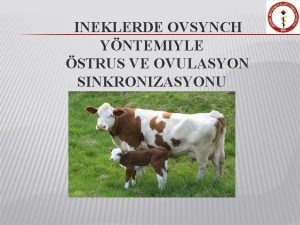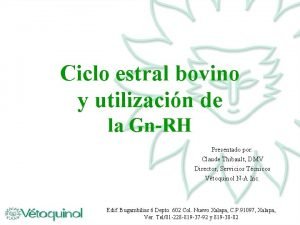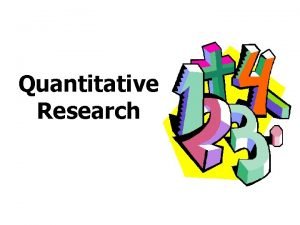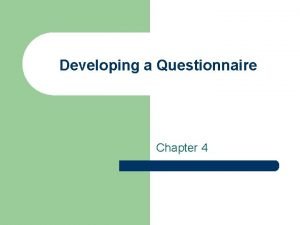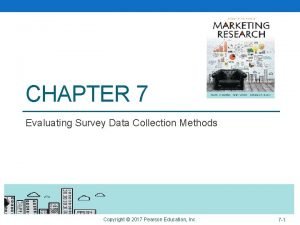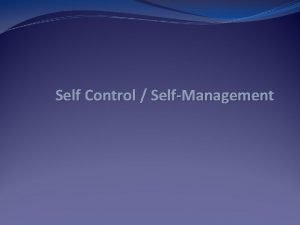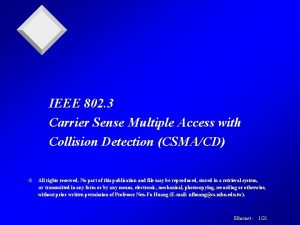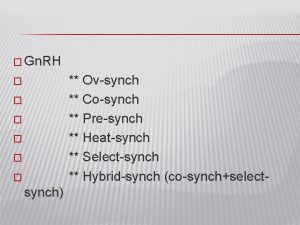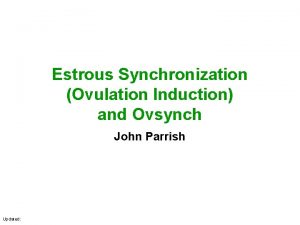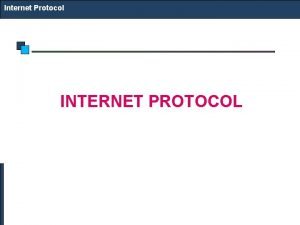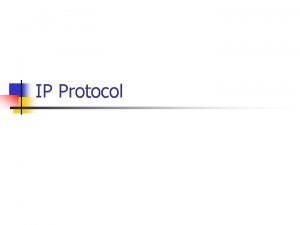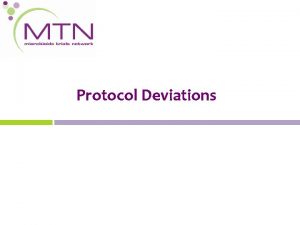Ovsynch protocol First Gn RH is administered This











- Slides: 11

Ovsynch protocol • First, Gn. RH is administered. This ovulates the pre-existing follicles and starts a new follicular wave. • PGF 2α causes regression in pre-existing corpora lutea, follicular development begins. • Second Gn. RH starts ovulation. • At 10 -20 th (16 th) hours planned artificial insemination is done.

Co-Synch protocol • Is a modification of ovsynch protocol. Artificial insemination is done at the same time as the second Gn. RH administration. Pregnancy rates are lower when compared to ovsynch but is done to reduce the time and repetition of field practice.

14 day Presynch + ovsynch protocol � This program is used for the first insemination after calving. � On day 0 (Postpartum 30 th day) PGF 2α is administered to regress the existing corpus luteum and follicules start to develop. � The second PGF 2α is administered on day 14. � Gn. RH is administered on day 28, it ovulates follicles and a new follicular development wave starts. � On day 35 the PGF 2α administation regresses the existing corpus luteum, and follicular development starts. � Ovulation starts on day 37 with Gn. RH. � Planned AI is done between 10 -20 th hours.

Synchronization Methods Preferred Usually for Heifers

Synchronization in Small Ruminants

• To stimulate reproductive activities in sheep; progestagens, melanotin, and also to increase ovulation and pregnancy rates Gn. RH and LH hormones are beneficial. • Flushing feding before the start of hormone administration and continuing this until 1 month after mating or insemination is important. Along with this warmth- light adjustment increases success rate. • Usually for synchronization in small ruminants various progestagen including devices are used.

Stimulation of ovarian functions in Anestrus period:

• During the CIDR application in non-breeding season the device is left in the animal for 7 -12 days in sheep, 17 -19 days in goats and with the removal of the device PMSG is administered. • The animals are expected to reach estrus in 1 -3 days. • In the sponge application in non-breeding season; the device is left in the animal for 12 -14 days in sheep and 11 days in goats. • To induce ovulation; in sheep PMSG administration immediately after sponge removal and in goats PMSG+PGF 2 a injection 48 hours before sponge removal is advised. • 36 -72 hours after administrations the animals are expected to reach estrus. Recommended insemination time is 55 th hour. Fresh semen is preferred.

During the Transition Period: • In this period sheep may be synchronized by progestagen or progestagen+e. CG. After these administrations estruses may be stimulated in higher rates by male introduction into the herd. • Ovarian functions can be started with melatonin administration along with these. However, for it to be effective it should be used for at least 30 -60 days.

Seasonal Applications • During the breeding season use of only progestagens are sufficient in sheep and goats. • In sheep sponge application lasts for 12 -14 days while in goats it lasts for 11 days. • Likewise, CIDR application lasts 7 -12 days in sheep and in goats 17 -19 days. • Along with these applications the PMSG/e. CG administrations on the day of sponge removal may be done to induce synchronization and increase twin rate. • Usually the animals reach estrus 24 -72 hours after the applications.

Seasonal Applications • After administrations cervical or laparoscopic inseminations using fresh or frozen semen can be done. • While in goats PMSG/e. CG injection is done 48 hours before device removal, in sheep this injection is done as the device is removed. • Inseminations can be done when estrus is observed after the administrations, which is usually approximately 45 -55 hours later.
